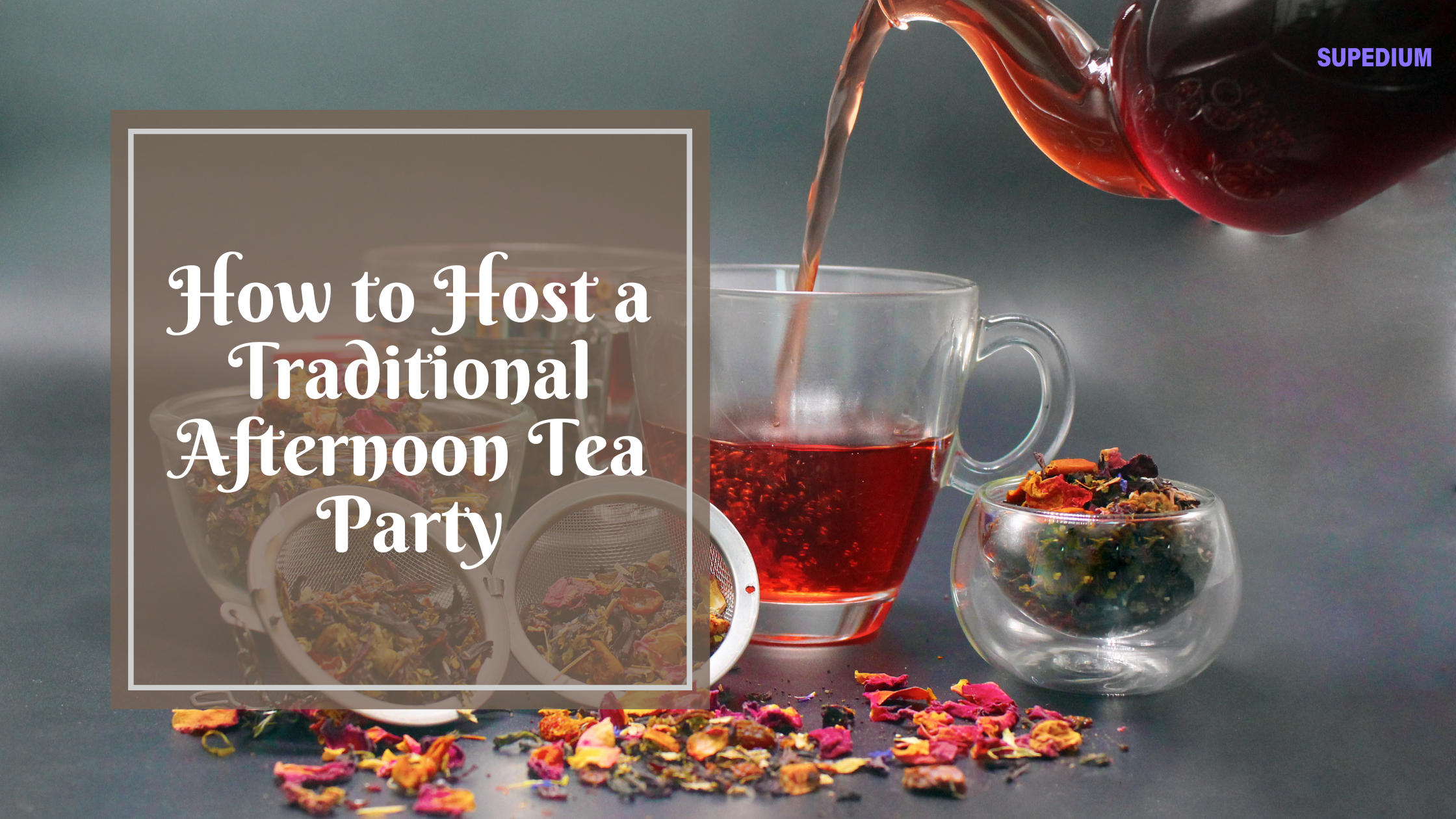Table of Contents
![]()
Afternoon tea, a cherished tradition that dates back to the early 19th century, has evolved from a simple social gathering into an elegant and refined occasion. Whether you’re celebrating a special event or simply enjoying a moment with friends, hosting a traditional afternoon tea party offers a delightful experience that combines sophistication with a touch of warmth. This guide will walk you through everything you need to know to plan, prepare, and host a memorable afternoon tea.
I. Introduction
A. Definition of Afternoon Tea
Afternoon tea originated in England during the early 1800s, attributed to Anna, the Duchess of Bedford, who sought a light meal to stave off hunger between lunch and dinner. Traditionally, it includes a selection of tea, finger sandwiches, scones with clotted cream and jam, and a variety of cakes and pastries. Today, it’s celebrated worldwide as a charming and leisurely event that encourages conversation and relaxation.
B. Purpose of Hosting an Afternoon Tea
Hosting an afternoon tea serves multiple purposes: it’s a delightful way to socialize, a charming setting for celebrations, and a chance to create lasting memories with friends and family. The relaxed yet elegant atmosphere of afternoon tea makes it perfect for marking birthdays, anniversaries, or simply enjoying an afternoon with loved ones.
II. Planning the Event
A. Setting the Date and Time
Afternoon tea is typically served between 3:30 and 5:00 PM. Choose a date and time that accommodates your guests’ schedules. Consider weekends or holidays if your guest list includes people with busy work schedules.
B. Inviting Guests
Compile a guest list based on your venue’s capacity and the formality of the event. Send out invitations well in advance, either through traditional paper invites or digital formats. Include details such as the date, time, venue, and RSVP instructions. Follow up with guests to confirm attendance and address any dietary restrictions.
III. Venue and Setting
A. Choosing the Location
You can host afternoon tea at home or opt for a rented venue. If hosting at home, ensure you have adequate space and seating. If choosing a rented venue, ensure it aligns with the event’s style and provides necessary amenities.
B. Decor and Ambiance
Create an ambiance that complements the traditional nature of afternoon tea. Traditional themes might include vintage china, floral arrangements, and classic tablecloths. For a more modern twist, you can incorporate contemporary decor elements while maintaining elegance. Set the table with fine china, polished cutlery, and cloth napkins. A fresh floral centerpiece can add a touch of sophistication, and soft background music can enhance the atmosphere.
IV. Menu Planning
A. Tea Selection
Offer a variety of teas to cater to different preferences. Traditional choices include black teas like Earl Grey or Assam, green teas, and herbal infusions. Provide options for both loose leaf and bagged teas. Ensure you have proper teapots and infusers for brewing.
B. Food Selection
- Sandwiches
- Traditional sandwiches include cucumber, egg salad, smoked salmon, and ham. Cut sandwiches into small, elegant finger-sized portions for easy eating.
- Scones
- Bake or purchase fresh scones, served with clotted cream and fruit preserves. Scones should be light and fluffy, and serving them warm enhances their taste.
- Pastries and Cakes
- Offer a variety of sweet treats such as tarts, cakes, and biscuits. Consider both classic options like Victoria sponge cake and modern delights like macarons.
C. Dietary Considerations
Be mindful of dietary restrictions by offering vegetarian, vegan, and gluten-free options. Communicate with guests ahead of time to accommodate allergies and preferences.
V. Preparing for the Event
A. Shopping for Ingredients and Supplies
Purchase high-quality tea, fresh ingredients for sandwiches and scones, and a variety of pastries. Ensure you have all necessary utensils, including tea pots, cups, saucers, and serving trays.
B. Pre-Event Preparation
Prepare food items like sandwiches and scones a day before the event to reduce stress on the day of the party. Set up the venue with table settings, decor, and arrange serving stations for easy access.
C. Tea Brewing and Serving
Brew tea just before serving to ensure freshness. Offer hot water for guests to refill their cups as needed. Ensure that tea is brewed at the right temperature and for the correct amount of time to bring out its best flavor.
VI. Hosting the Party
A. Greeting Guests
Welcome guests warmly and guide them to their seats. Introduce guests to one another to facilitate conversation and ensure everyone feels comfortable.
B. Serving Tea and Food
Serve tea and food in a timely manner. Start with tea, followed by sandwiches, scones, and finally, pastries and cakes. Maintain a flow that allows guests to enjoy each course without feeling rushed.
C. Engaging Activities
Facilitate conversation and engagement with light topics or gentle games, such as trivia or storytelling, to enhance the social experience.
VII. Etiquette and Tips
A. Tea Drinking Etiquette
Teach guests how to hold their teacups properly and use saucers. Avoid slurping or making excessive noise while drinking tea.
B. Food Etiquette
Encourage guests to use utensils appropriately and handle scones and pastries with care. Provide guidance if necessary, but keep the atmosphere relaxed.
C. General Hosting Tips
Ensure a relaxed atmosphere by being attentive to guests’ needs while remaining unobtrusive. Address any issues calmly and promptly, such as refilling items or managing unexpected guests.
VIII. Post-Event Considerations
A. Thanking Guests
Send thank-you notes or messages to guests after the event. Express appreciation for their attendance and feedback on the event.
B. Clean-Up
Organize and clean up the venue efficiently. Manage leftovers by offering them to guests or storing them properly. Ensure the venue is left in good condition.
IX. Conclusion
Hosting a traditional afternoon tea party is a delightful way to celebrate and connect with others. By paying attention to details, from the tea selection to the ambiance and etiquette, you can create an elegant and enjoyable experience. Embrace the charm of this timeless tradition and let it inspire you to host your own memorable afternoon tea.
Share This





Be the first to comment